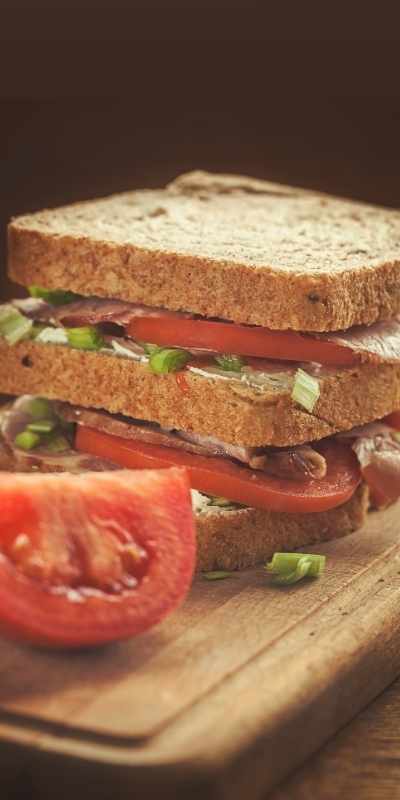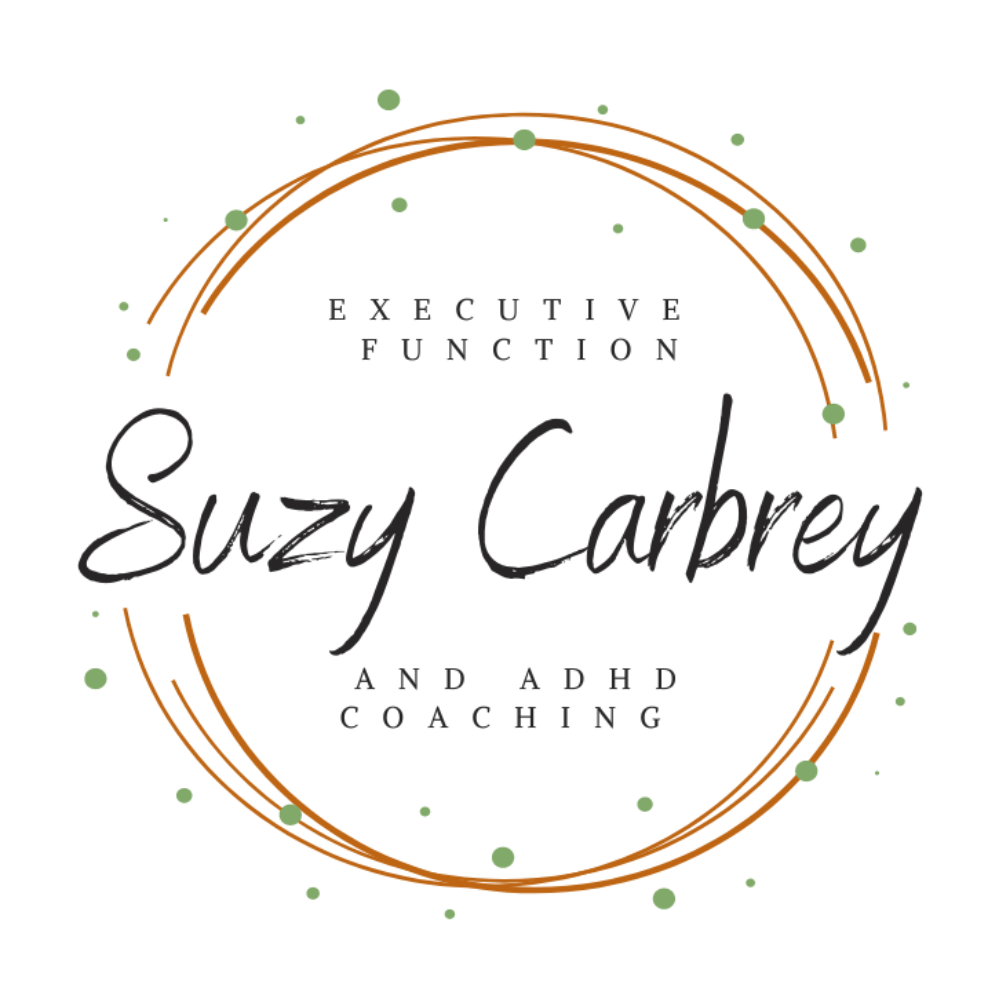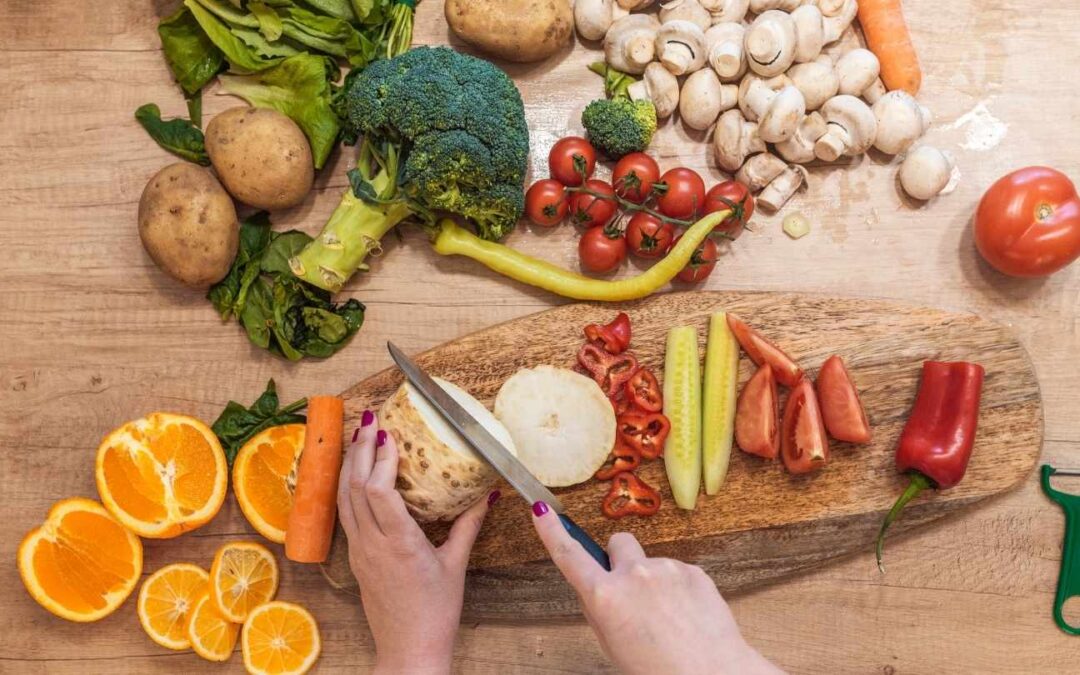How to feed yourself consistently when executive function challenges get in the way
If meal planning feels like an overwhelming puzzle you never quite solve, you’re not alone. Many adults with executive functioning challenges, especially those with ADHD, struggle with feeding themselves regularly. Not because they don’t want to eat well, but because getting meals on the table requires a whole stack of brain skills that don’t always come easily.
Initiation. Planning. Organization. Working memory. Task shifting. Time awareness. Emotional regulation. All of these come into play when you’re trying to decide what to eat, shop for groceries, or get food from your fridge to your plate. So if your brain feels like it short-circuits every time you try to plan meals, it’s not a personal failure. It’s an executive functioning issue, and you can work with it.
This post isn’t about “eating healthy” in the traditional sense. Instead, it’s about creating systems that support cognition and daily functioning. And when it comes to food, that means shifting the goal from “perfect nutrition” to fueling your brain in ways that are doable, consistent, and low-pressure.
Let’s break down what makes meal planning hard and how to make it easier.
Why Feeding Yourself Can Feel So Hard
Feeding yourself seems simple but it actually involves a long sequence of tasks that require strong executive functioning skills. Here’s what that looks like in real life:
Initiation Barriers
You might think about making food, but never get started. Maybe it feels too overwhelming or boring. Or you keep putting it off until it’s too late, then end up skipping meals or grabbing something that leaves you feeling foggy or unsatisfied.
Initiating a task like meal planning or prep requires energy, focus, and a sense of reward; all of which can be in short supply with ADHD or other executive functioning difficulties.
Planning Overload
Meal planning isn’t just one task, it’s dozens of micro-questions:
- What meals am I making?
- What do I already have?
- What needs to be used up?
- What groceries do I need?
- When will I have time to cook?
That information and decision stack gets heavy fast. Without a system in place, the entire process can feel paralyzing.

Working Memory Traps
Working memory is what allows you to hold and manipulate information in your mind. If this is a struggle, it might look like:
- Forgetting what ingredients you need while you’re at the store
- Starting a meal and realizing you forgot to defrost something
- Getting halfway through the week and forgetting what you planned to make
These glitches create more work, more frustration, and more skipped meals.
Time Blindness and Emotional Regulation
You might underestimate how long it takes to cook, or not feel “ready” until you’re already too hungry. Or you might feel overwhelmed by the number of steps involved and shut down emotionally before you even begin.
The Language Shift: From “Healthy Eating” to Fueling Your Brain
Before we dive into strategies, let’s reframe the goal. This conversation isn’t about sticking to a perfect diet or following rigid food rules. It’s about consistently fueling your brain so you can think clearly, manage your emotions, and stay focused.
Instead of asking:
“What’s the healthiest option?”
Try asking:
“What food will help me feel more regulated and focused today?”
That mental shift can relieve the pressure of “doing it right” and help you focus on function over perfection.
Easy Wins for the Distracted Brain
You don’t need to overhaul your entire eating routine. Small, repeatable strategies can lower the mental load and build consistency. Here are a few ADHD-friendly ways to approach meal planning:

1. Rotation Meal Planning
Instead of reinventing your meal plan every week, build a short rotation of go-to meals.
- Choose 3–5 meals you like and can reliably make (or assemble).
- Rotate them across your week or month.
- Add variety with toppings, sauces, or sides, if desired—but don’t overcomplicate it.
This reduces decision-making, speeds up grocery shopping, and helps you build muscle memory for prep.
🧠 Why it works: Your brain gets a break from constantly generating new ideas. You’re creating a “default mode” for meals, which helps with initiation and reduces overwhelm.
2. Visual Grocery Lists
Forget trying to remember what you need, externalize it.
- Use a grocery list app or take photos of your fridge/pantry before shopping.
- Try a categorized list template you can reuse each week (e.g., produce, proteins, pantry).
- Use a dry-erase board on the fridge with staples you’re running low on.
🧠 Why it works: Visuals support working memory and reduce the cognitive load of shopping. They also make it easier to delegate.
3. Prep Shortcuts
You don’t have to be a meal prep champion to save time and energy.
- Keep pre-chopped veggies or frozen grains on hand.
- Batch-cook one or two ingredients like ground meat or roasted vegetables.
- Buy partially prepped items (like shredded rotisserie chicken or salad kits) to reduce steps.
🧠 Why it works: Reducing steps lowers the barrier to initiation. Your brain is more likely to say “yes” to something that feels quick and manageable.
4. Outsource Decision-Making
Give your brain a break from choosing. Structure helps reduce decision fatigue.
- Use a theme night system: Pasta Mondays, Bowl Wednesdays, Stir-Fry Fridays
- Rely on services like grocery delivery, meal kits, or pre-made items
- Let another person in your household decide what’s for dinner once a week
🧠 Why it works: Outsourcing reduces pressure and creates built-in cues for action. It gives your brain clarity instead of options.

5. The “I Planned It, But I Don’t Want It” Problem
Here’s a challenge that doesn’t get talked about enough: You did the hard work of planning a meal. You even bought the ingredients. But when the time comes to make it or eat it? You don’t want it. At all.
This is extremely common for ADHD brains. Dopamine drives interest and motivation, and if the food doesn’t spark that interest in the moment, your brain may flat-out reject it. Even if it made perfect sense during planning.
Rather than seeing this as a failure, try building flexibility into your system:
Make flexible meal components:
Instead of locking into “Tuesday = chili,” think of it as “I have ground beef prepped, and I can make tacos, chili, or a rice bowl depending on my mood.”
Keep low-effort backup options:
Have a couple of frozen meals or quick-assembly staples on hand that require no commitment or emotional energy.
Create a “menu, not a map”:
Think of your meal plan as a menu you can choose from, not a rigid itinerary. Give yourself permission to swap days or skip something if it doesn’t appeal.
Tune into body cues:
If your food preference changes, it might reflect what your body or brain actually needs: warmth, texture, protein, comfort. You can learn from those moments and adapt over time.
🧠 Why it works: Allowing flexibility reduces shame, increases follow-through, and helps you develop a more compassionate, responsive relationship with food and planning.
Build Systems That Stick
Strategies are only helpful if you remember to use them. Here’s how to build scaffolding around your meal routines:
Habit Stacking
Pair meal-related tasks with things you already do. For example:
- Check the fridge while your coffee brews
- Add items to your grocery list right after brushing your teeth at night
- Review the weekly meal plan when updating your calendar
🧠 Why it works: Stacking tasks together makes them easier to remember and more automatic.
Visual Reminders
- Use sticky notes on your fridge with meal ideas
- Post your rotation plan where you’ll see it
- Put a grocery list app on your phone’s home screen
🧠 Why it works: Out of sight = out of mind. Visual cues re-engage your attention and help you stay on track.

“Good Enough” Meals
Perfection is the enemy of follow-through. If cooking feels impossible, lower the bar.
- A sandwich or microwave burrito is still fuel.
- Smoothies, snack plates, and cereal dinners count too.
- Aim for something, not ideal.
🧠 Why it works: Reducing expectations lowers shame and increases the likelihood of consistent follow-through.
Use Your Own Momentum
Sometimes the hardest part is just getting started. When you do get into a groove:
- Make a double batch
- Wash produce while you’re already in the kitchen
- Set yourself up for “future you” by leaving out ingredients or notes
🧠 Why it works: Momentum fuels initiation. When you’re already in action, ride the wave.
If You Live with Others: Co-Create Systems
Feeding yourself can get even more complex when you’re sharing a household. Whether it’s a partner, kids, or roommates, different brain types = different needs.
Try:
- Rotating who plans and shops each week
- Having a shared “go-to meals” list that everyone agrees on
- Creating a shared grocery list on a whiteboard or app
The goal is not to do it all yourself, but to co-create systems that make things easier for everyone involved.
When You Still Get Stuck
Sometimes even the best systems break down. That’s okay. Try these quick reframes:
- “I don’t have to do it perfectly, I just have to do something.”
- “I can do the first step and see how I feel.”
- “I’ve done hard things before. I can figure out food today, too.”
Or ask yourself:
- What’s one thing I can do right now?
- What would make this feel 10% easier?
- If I were supporting a friend, what would I suggest?
Final Thoughts: Fueling Your Brain Is a Form of Care
Feeding yourself is a form of support and self-care. When you take steps to reduce decision fatigue, simplify routines, and remove pressure from meal planning, you’re making space for better focus, energy, and emotional regulation.
You’re not lazy or incapable. You’re navigating life with a brain that needs different scaffolding and that’s entirely valid.
So start where you are. Choose one strategy to try this week. Maybe it’s a visual grocery list. Maybe it’s repeating a couple of meals. Maybe it’s permission to eat cereal for dinner without guilt.

You deserve to feel nourished and supported, not overwhelmed by the process.
Learn more with Online Coaching for Executive Functioning / ADHD
Ready to gain control and enhance your executive functioning? As an experienced and compassionate coach, I specialize in providing support for executive functioning and ADHD. To embark on your journey, please reach out to me at 708-264-2899 or email hello@suzycarbrey.com to schedule a FREE 20-minute discovery call consultation.
With a background as a speech-language pathologist, I have a strong foundation in executive functioning coaching. My graduate degree program in SLP placed a significant emphasis on cognition, including executive functions, and I have years of experience in medical rehabilitation, providing cognitive-communication therapy. Additionally, I have completed an ADHD Services Provider certification program, I am Solutions-Focused Brief Therapy Diamond Level 1 certified and I am trained in the Seeing My Time® executive functioning curriculum.
Experience the convenience and effectiveness of online coaching, backed by studies that demonstrate equal results to in-person services. Parents, professionals, and emerging adults love the convenience and privacy of receiving coaching from their own homes.
Whether you reside in Chicago, Milwaukee, Indianapolis, Kansas City, or anywhere else around the globe, I am here to assist you. Schedule your discovery call consultation today, and I eagerly anticipate the opportunity to work with you!
Please note that although I am a certified speech-language pathologist, all services Suzy Carbrey LLC provides are strictly coaching and do not involve clinical evaluation or treatment services. If you require a formal speech therapy evaluation and treatment, please inform me, and I can provide appropriate recommendations.

